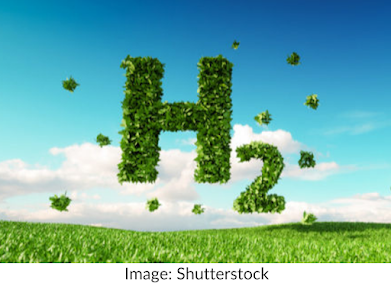Algae: The Green Goo Carbon Capture Solution
As greenhouse gas emissions continue to rise globally, different approaches are being explored to cut back on GHG levels. The first method that may come to mind is the widespread implementation of renewable energy technologies like hydropower, wind, or solar. However, fossil fuels like coal, natural gas, and oil continue to dominate the energy scene, pumping the atmosphere with CO2 and heating the planet. Carbon sequestration is a process that involves sucking CO2 out of the air and storing it in a solid or dissolved state to ensure that it does not make its way into the atmosphere. Though humans have been creating technologies like direct air capture fan systems to capture carbon, about 25% of carbon emissions are absorbed naturally through soil or trees. However, this natural sequestration comes with its issues; Earth's oceans capture 30% of fossil fuel emissions, leading to ocean acidification. Another natural method of carbon capture is receiving a lot of attention and funding recently: algae.
Algae is one of the oldest life forms on Earth, and because it uses CO2 to grow, it does an excellent job capturing carbon and unlocks other unique advantages. When algae absorb carbon, the carbon is stored as solid biomass. This biomass can create renewable fuels like biodiesel, biogas, biohydrogen, bioethanol, and biobutanol. Algal biomass is also being looked into for animal feed or even cleaner, protein-rich food options for humans. Smaller amounts of algal biomass are also added to products like cosmetics, pharmaceuticals, and biofertilizers.
Controlled algae cultivation in the ocean and on a smaller scale is currently being researched. As algae absorb carbon, it sinks to the bottom of the ocean, where carbon stays locked in, thus it is prevented from escaping into the atmosphere. According to an Institute of Physics article, "Land-based plants contribute 52% of the total carbon dioxide absorbed by the earth's biosphere, while ocean-based algae contributed 45% to 50%." Additionally, since algae cultivation does not require using valuable arable land, cultivation in the ocean can be done on a larger scale. Further, algae can survive in harsh environments, including saltwater and wastewater, making them versatile compared to other sequestering plants. According to a 2018 Intech Open research publication, "As per the available literature, an area of 1 Acre (4000 m2) shall be able to capture about 2.7 tons/day of CO2" Usually, algae is viewed as the rapidly growing pesky green goo that blankets unhealthy lakes and ponds. However, these qualities of speedy growth make it a great contender for large-scale carbon capture. The same pollutants, including CO2 and NOX (nitrogen oxides) and SOX (sulfur oxides), that drive the growth of algae could be beneficial for creating ideal conditions for algae to grow. This optimization was demonstrated by a 2004 experiment where researchers added FeSO4 (iron (II) sulfate) to acidic ocean water. Over several weeks they observed that algae growth was even more rapid than before, and when they stopped adding FeSO4, much of the algae died, and growth rates slowed.
Another approach to utilize algae for carbon capture involves placing algal cultivation facilities near CO2 emitting power plants. CO2, NOX (nitrogen oxides), and SOX (sulfur oxides) are abundant in flue/exhaustion gas - the cloudy white gas that emits from power plants- as well as N (nitrogen), P (phosphorus), and other pollutants found in agricultural, industrial and sewage wastewater. In Hawaii, an operating algal plant has the potential to capture 90% of CO2 from a nearby powerplant. A scientist leading the project in Hawaii believes that "if the United States stuck an algae farm next to every power plant located in an algae-friendly climate, those farms could sequester 800 million metric tons of CO2, offsetting 198 coal-fired power plants." In June of 2021, the US Department of Energy's Office of Fossil Energy and Carbon Management announced $8 million in funding for four projects "that capture and utilize carbon dioxide (CO2) from power systems or other industrial sources to create valuable products and services, biomass and bi-products... develop conversion technologies to decrease emissions." One of the projects, Helios-NRG, LLC, received funding for developing "a novel algae technology to capture CO2 from carbon-based power plants and convert it to valuable products that generate revenue," which will hopefully help make the idea of an algae cultivation facility next to every CO2 emitting power plant, a reality!
Sources:
https://clear.ucdavis.edu/explainers/what-carbon-sequestration
https://iopscience.iop.org/article/10.1088/1755-1315/120/1/012011/pdf
https://www.frontiersin.org/articles/10.3389/fmars.2019.00029/full
https://www.intechopen.com/chapters/65952#B2
https://spectrum.ieee.org/new-tech-could-turn-algae-into-the-climates-slimy-savior/particle-1
https://www.energy.gov/fecm/articles/department-energy-invests-8-million-projects-develop-algae-based-technologies-capture






Comments
Post a Comment